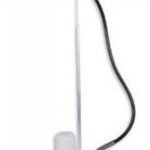A great many men descended from Ireland, Scotland, or even other places less Celtic have the desire to wear a kilt. I’m not really sure what it is. Perhaps all of us are latently aware that pants just aren’t as comfortable as other leg-coverings. Perhaps the idea of wearing a garment that just might, possibly, give us the chance to “accidentally” show of our personal pieces gives us some sort of quasi-exhibitionist thrill. For some, among them myself, there is a certain feeling of connection to ages and people now gone, a sense that, in wearing a kilt, a man of Celtic descent is connecting himself to his ancestors, going back, sometimes thousands of years.
No matter what your particular reason for wanting to wear a kilt may be, if you’ve looked into it with any degree of commitment whatsoever, you have probably sat baffled in front of a computer screen, wondering how it could be possible for what seems like a rather simple garment to cost such a pretty penny.
Well, there is an explanation–markup. People may try to argue that a kilt bought from Scotland was hand-made and attentively cared for, and that that is why it costs upwards of $400. And they would be right. Kilts are like wine, it’s not so much that the ones sold at $400 aren’t “worth” the price, just that they far exceed the opulence quota for most people. So, there must be an alternative, right?
Well, it is true that there are a growing number of companies that provide more economical kilts. They use various methods to achieve this. Some make the kilts from different, often lighter material. One of these, the Utilikilt (www.utilikilt.com), is meant to be more functional than the average dress kilt, which is meant for everyday use as much as a tuxedo would be. Others, it is true, are shoddily made.
You might try your luck buying a cheaper kilt, but it remains a fact that, if you want a “nice” kilt, you’re going to have to expect to spend along the lines of Dom Perignon. Even if you want a Utilikilt, you might be surprised to see them costing over $100, especially if they claim to be intended for everyday use, even for heavy working. Is that the way you would treat a $100 pair of pants? Probably not.
So, what do I recommend? The road less traveled, that you make your own kilt. I know, I know. You’ve never sewn anything in your life, but for perhaps stitching closed a hole in your pants or darning your socks. How in the world is anyone to expect you to actually produce, from scratch, by yourself (no wifey for this one, mate–be a man), and then actually have it be in a state to be worn? Well, I can’t claim to be an expert. Not by any means. However, I can claim to be a man who has little to no sewing experience, and who has done it himself, beginning to end (and without so much as a sewing machine).
Therefore, in complete sympathy for your desire to wear the single most head-turning garment that a man can wear without cross-dressing, and also your desire to keep as much money in your wallet as you possibly can, I offer you the following, a step-by-step guide outlining how I made my kilt, and how you can make yours. Enjoy:
1. Gather your materials. You will need the following: measuring tape (the kind used by a tailor, not a carpenter), a sewing needle, thread of whatever color best suits your desired kilt, a pencil, a great preponderance of safety pins, an iron, and a can of spray-on starch. Oh, and, of course, the kilt material. How much you need will have to be determined by how big you are, and how wide you make your pleats. I am an especially large fellow, but I also used especially wide pleats. I bought four yards of fabric, and had plenty left over. More on this later.
2. Take your measurements. Your making a garment here, aren’t you? And a custom-fitted one, at that. Right grand, isn’t it? Good. Now, you’ll need to measure yourself up, if it’s not going to look like a table cloth wrapped around your waist. The measurements to be taken are rather simple. Make sure you write your measurements down as you take them. The first is the waist measurement. A kilt is typically worn much higher on the body than trousers are, so even if you know your “usual” waist measurement, you’ll need to take a new one. Measure in a circle around your navel, doing your best to keep the tape perfectly horizontal. Do not, under any circumstances, suck in your gut. There’s no need to cheat here, and, if you do, your kilt is not going to fit.
The second measurement for you to take is your hip measurement. Well, let me clarify that. If your hips are wider than your waist, you’ll need to take it. If your waist is larger, there’s no need, and you can move on. If you do have to take the hip measurement, it’s basically the same as the waist measurement, but it has to go around you at the widest point beneath your waist.
Your third measurement is what’s called the kilt length. This one can be tricky, especially alone, and so I give you permission to have someone help you with it. What you have to do is measure the distance from your navel (well, the spot at which you took the waist measurement, wherever that may have been) to the middle of your kneecap. Centuries of kilt making have revealed a preferred method of taking this measurement. Kneel on the ground, and keep the front of your body perfectly straight. Hold the end of the tape at your navel, and have your helper find the point at which it strikes the ground, while falling perfectly straight. This length will be the length of your kilt.
3. Buy your fabric. This is a very important decision. You’ll need a fabric that’s on the heavy side, but also one that you’ll be able to iron without ridiculous difficulty. After all, it will need to maintain its pleats. For my first kilt, I used a heavy canvas. It was simple, inexpensive, and heavy-duty. The right fabric for you is a question that you will have to answer yourself. Traditionally, a dress kilt is made of tartan worsted wool. You don’t have to go that route, and, if you do, it will be more expensive (but still not on the level of buying a kilt). Now, once you’ve selected your fabric, the question arises of how much you’ll need. Take your waist measurement, and divide it in half. Then, multiply by three. We’re still not there. A kilt is made of basically three sections: the pleated back, the under apron, and the apron. That mean’s you’re going to need three sections of equal width, each of which comprises half of your waist measurement.
Then there’s the matter of pleats. This can get tricky. I made my kilt with 4″ pleats. That was, in retrospect, far too wide. You would do well to pick a pleat width that factors well into the width of the pleated section of the fabric. In all honesty, my experience of observing professionally-made kilts indicates that it would not be a bad idea to use 1″ pleats. It’s easy to measure, and it’s bound to produce pleats small enough not to bunch up, fall out (as in, no longer hold as ironed), and get wrinkled, which is the problem that I encountered. Learn from my mistake. In any case, keep in mind that, when it comes to the pleats, there’s as much material on the underside as on the outer side. That means that you need 2″ of fabric to make a 1″ pleat, one in front, and one in back. Keeping to my advice of one inch, this means that you’ll need twice as much fabric to make the pleated section as you will have once it’s finished. In other words, if you have a 36″ waist, and therefore your pleated section needs to measure 18″ across, you’ll need 36″ of fabric to make it, since half of it needs to be folded under and sewed in, anyway. That said, take a moment to figure out how much fabric you’re going to need.
Once you’ve done that, and before you actually purchase any fabric, keep in mind that it is going to have to accomodate your kilt length. If you have a kilt length of 30″, you can’t buy fabric that’s only 20″ wide. It won’t work. So, be careful.
4. Lay it out. Find a nice long table, if you’ve got access to one. If you don’t, it may be a good idea to use some floor space. Lay your fabric out from right to left. Mark of your three sections with a pencil, and also be sure you mark the top and the bottom (this might otherwise get mixed up later in the process). Remember to make your pleated section twice as wide as you under apron (which is on the right, and will be concealed when you wear your kilt) and your apron (on the left, and will be what people consider the front of the kilt). Take your measuring tape and lay it out along the top of the fabric. Make sure it’s straight. Make a marking at the beginning and end of the section. Now, make a mark with your trusty pencil at the passing of every inch from the beginning of the section (on the right) to the end (on the left). It would do you well, once that’s finished, to also make markings on the bottom of the kilt, and then in the center. That means you should have three markings for every inch across the back of the kilt.
5. Fold ’em up. Now comes the fun. Look at your first two markings, which are at the top, one the right side of the section. One of them marks the end of your under apron. The other marks the left edge of the first pleat. The space between them will be the outer side of the first pleat. Now consider the next marking to the left. The space between the second and third markings is the underside of the first pleat, and, therefore, needsto be folded under the outer side completely. Make sure it’s straight from top to bottom. Once it’s folded under, pin it, once at the top, once at the bottom, and once in the middle, basically at each of the three markings I had you make earlier. Continue this process until you get to the end of the section.
Now, I know this may not be the most opportune time to mention it, but it is possible that you will get to the end of the section and run out of pleats. Since each pleat takes two inches, if the section width is an odd number (19″, for instance), you will get to the end of the section and have only one more inch of fabric. My recommendation is to measure another inch and make one more pleat, though you could just as easily leave one off. It shouldn’t be noticeable, either way. If you find yourself finished with the kilt and it is noticeable, you can always doctor the width of the underapron to compensate. Don’t worry.
6. Sew ’em in. There’s actually a little bit more to this one than you might expect. First of all, if you needed to take a hip measurement, it’s time to break out the pencil again. Make a mark across the back of the kilt that corresponds to wear that hip measurement is between your navel and your knees. That’s called the hip line. If you didn’t take a hip measurement, the hip line is not as important, but you’ll still need one. I chose six inches down from the waist, myself. Now that you’ve got a hip line, it’s time to start sewing the pleats in. The concept behind the pleats of a kilt is that the can fan out. However, for the sake of structure, they need to be stabilized at the top. This is done by sewing them in, but not all the way down. Sew from the top of the kilt down to the hipline. Now, this article does assume that you know how to make a simple straight stitch. If you don’t, get someone to teach you, or consult a basic sewing guide. Once you know that, it’s all the sewing you need. Unfortunately, I do not possess and cannot operate a sewing machine, so I am unable to provide instructions that incorporate that method. I suppose I’ll assume that if you’re operating a sewing machine, you know how to do it.
As you’re sewing in the pleats, you can take the pins out of them. Once they’re all sewn in, you’re almost finished with the sewing. Two things remain (one, if you didn’t take a hip measurement). First, if you did take a hip measurement, you need to make the waist thinner than the hips. What that means is that you need to make a few two-inch-long triangular cuts in the top of the fabric, and then sew them back up straight, so as to remove fabric from the waistline. Make them no wider than one inch at the top of the fabric, and make as many as you need to reduce the waistline appropriately, and no more. Try and make a balanced number of cuts on the right and left sides of the center of the section. If you need to take off an odd number of inches, I suggest that you divide the last one between two half-inch cuts on both sides of the fabric.
Once your waist is all squared away, you may need to fold over the top of the fabric, assuming that you had some excess above your waistline. If that’s the case, fold it as far as you need to in order to get the appropriate kilt length, but don’t fold it past the hip line. If you have that much excess, fold it over twice. Then, the sewing is basically complete.
7. Trim it up. Turn your kilt over. Now, you’re looking at the inside. What I’m about to say is probably going to sound unreasonable. I couldn’t believe it myself. It doesn’t make sense, but, I assure you, it will work. It won’t ruine the kilt, if you do it right. Trust me. Now, here it is: You should be looking at the inside of the pleats. Notice how, at the top, from the waistline down to the hip line, there are these flaps of fabric, the undersides of the pleats, that seem to serve no purpose. You can cut them out. The important parts are sewed in already, and the flaps that you see before you are extra. Get rid of them. Just make sure not to cut down past the hip line. If you do that, everyone will be able to see into your kilt. So, cut from the waistline down to just above the hipline, and you should be just fine.
8. Try it on. You’ve been waiting for a long time, I’m sure. Take a moment and enjoy yourself. You have a kilt, now. Wear it for once.
9. Extras. At this point, I would say that your kilt is perfectly wearable. However, there are some other things that you could do. I’ll explain them, but you don’t need to do them. One is to sew on buckles. They will certainly make it easier to hold the kilt closed. However, a belt is also effective. You could use buttons, too. In any case, professionally made kilts generally have one buckle on both sides of the apron. The one on the left will require you to cut a slit through the top of the apron. One side of the buckle will be on the under apron, and the other will be on your left hip, on the outside of the kilt. The right side is pretty self-explanatory, though I should mention that there is generally also a buckle at the bottom of the ride side, to keep the apron from flapping. Many kilters also use a semi-decorative pin to achieve the same effect.
Well, that’s it. I’m sorry I couldn’t come up with a tenth step in the process, just to make it sound more official, but that’s all there is to it. Enjoy your kilt, and don’t give in to the consumerist system which dictates that you need to buy one. Be your own man, and be proud!







